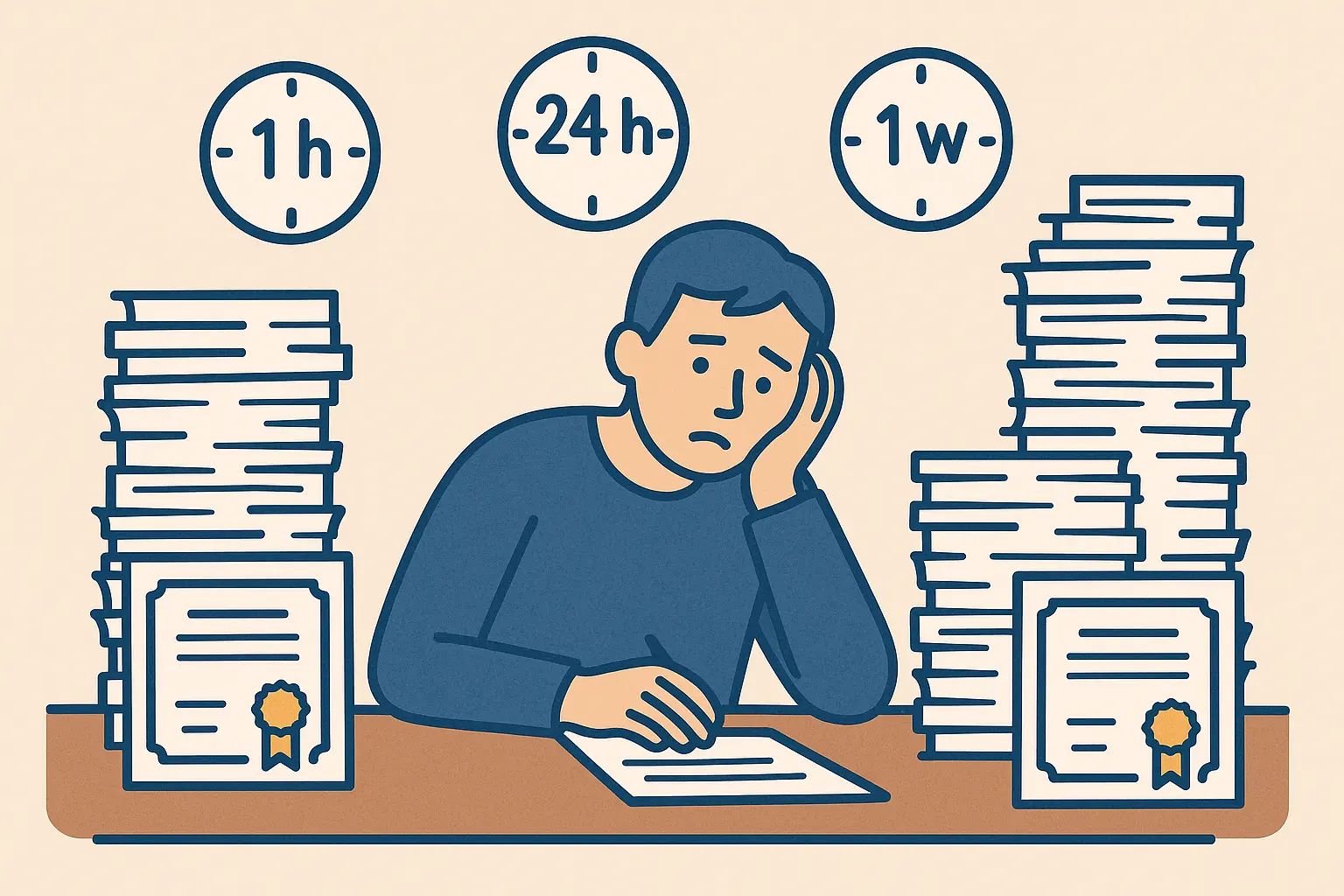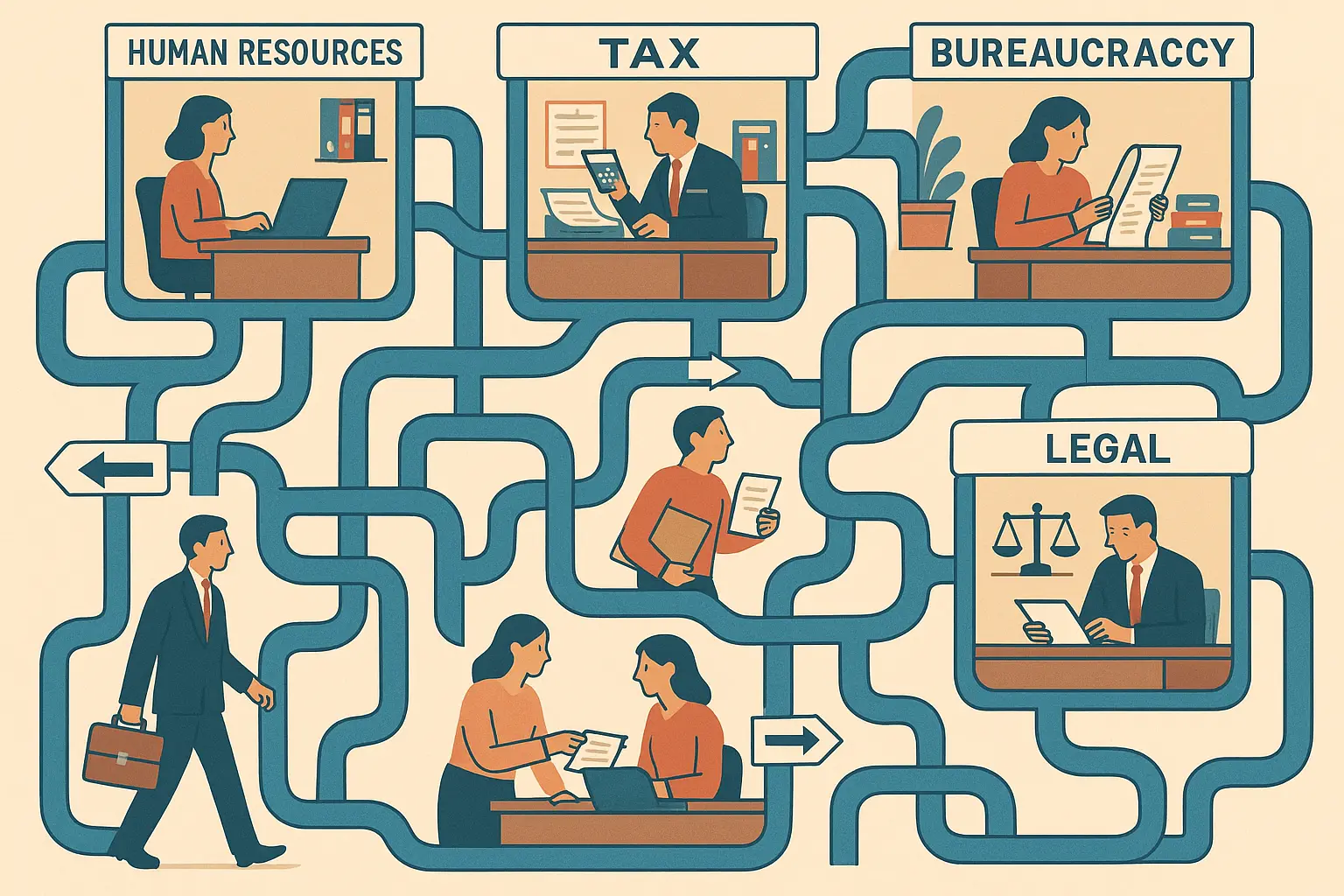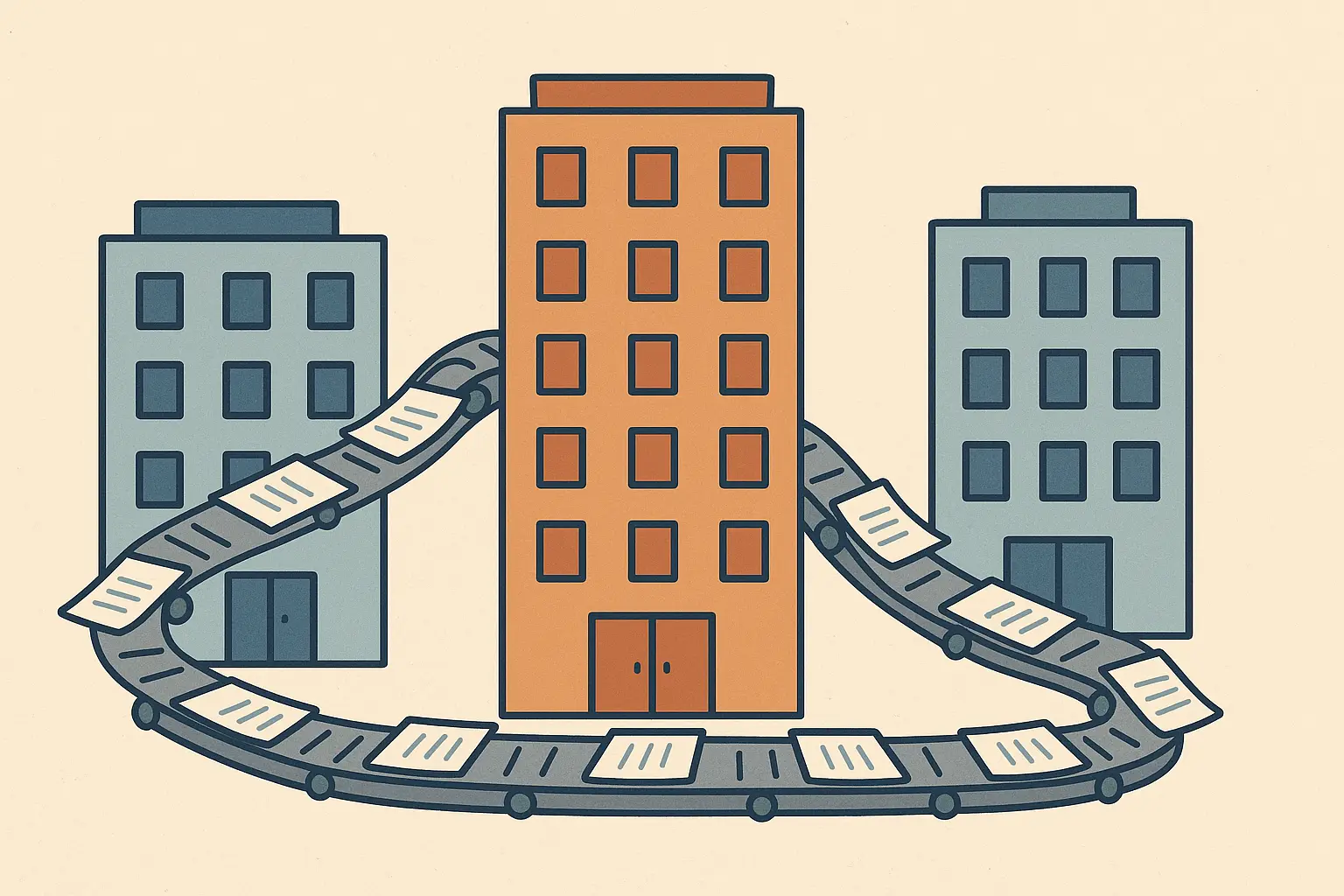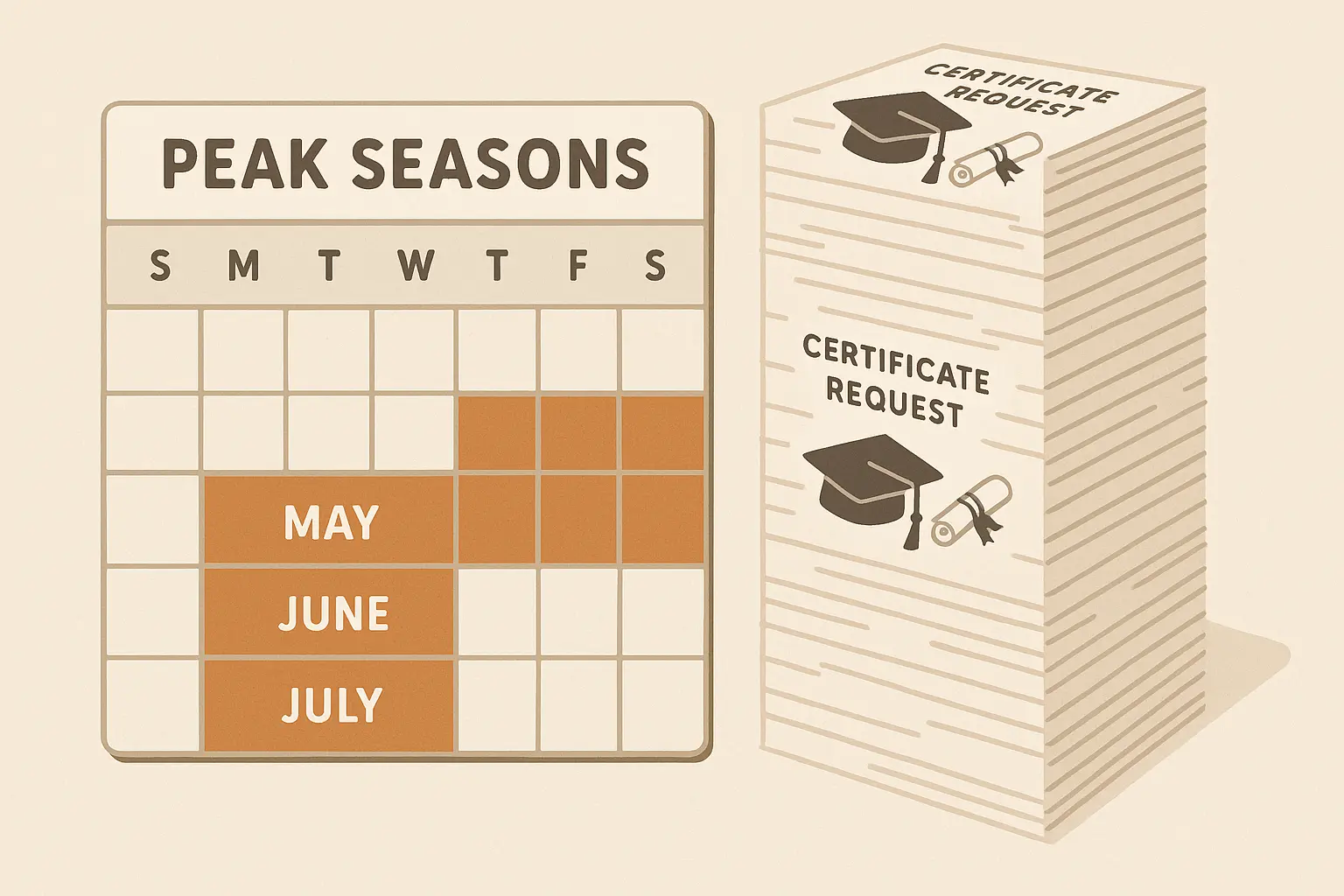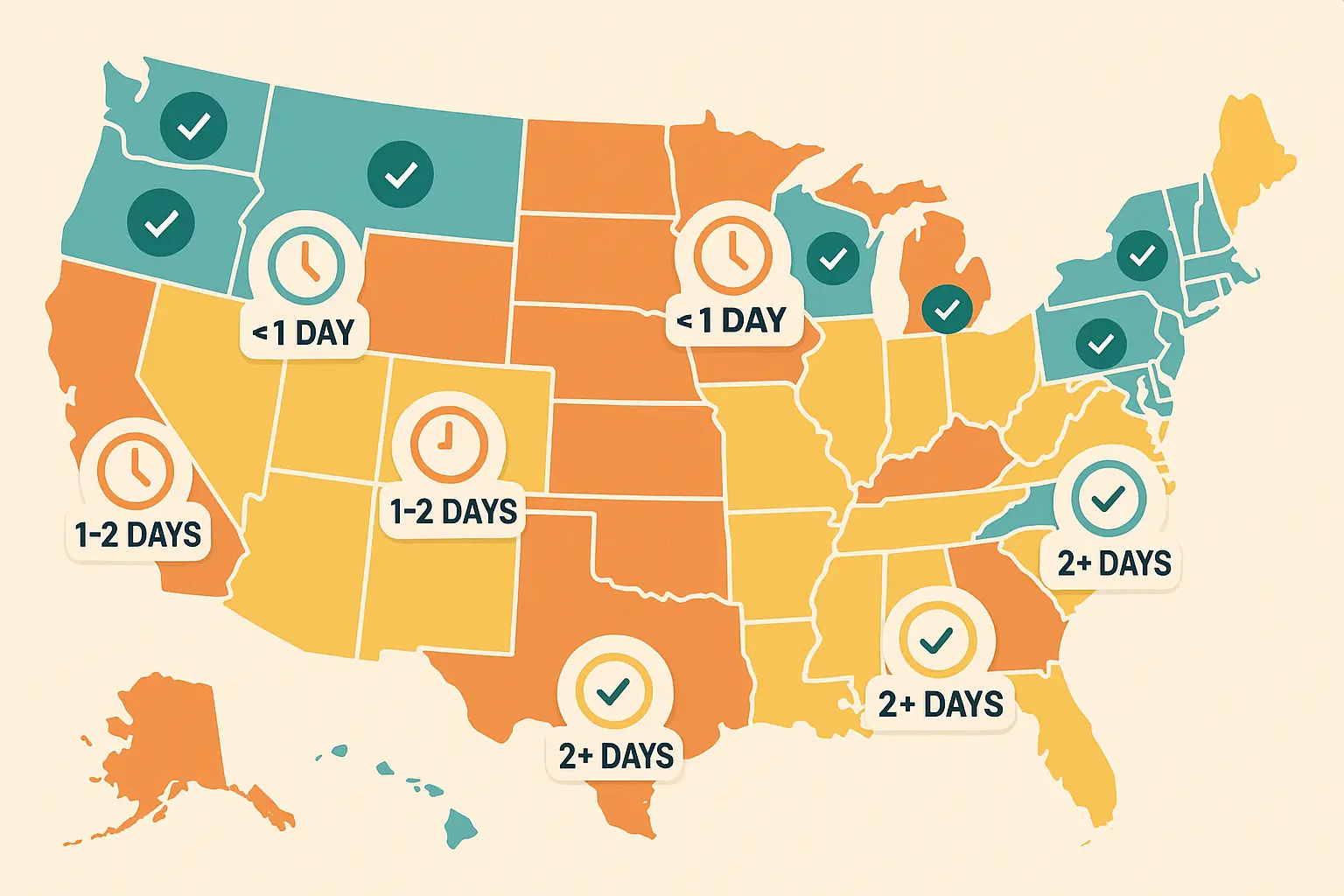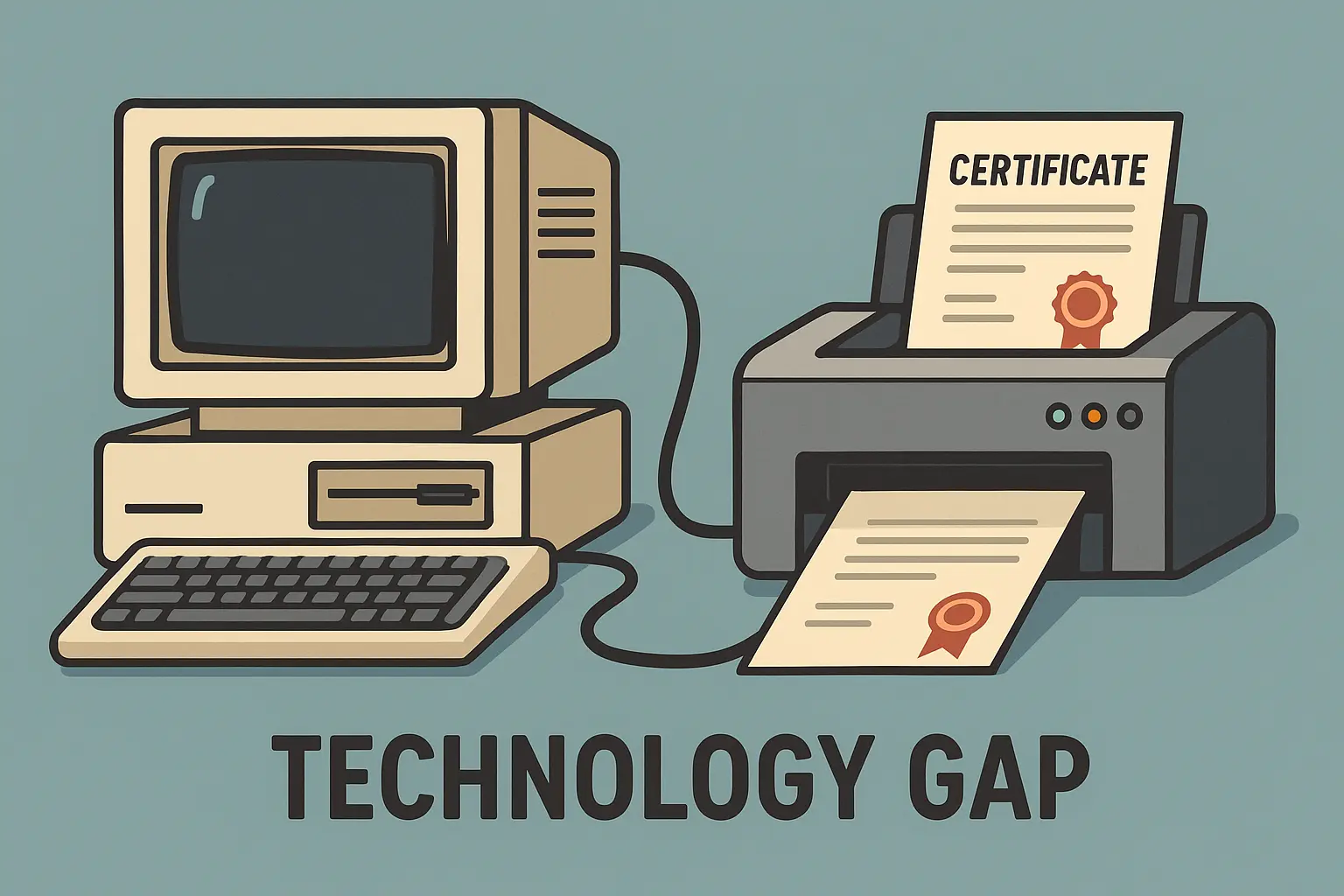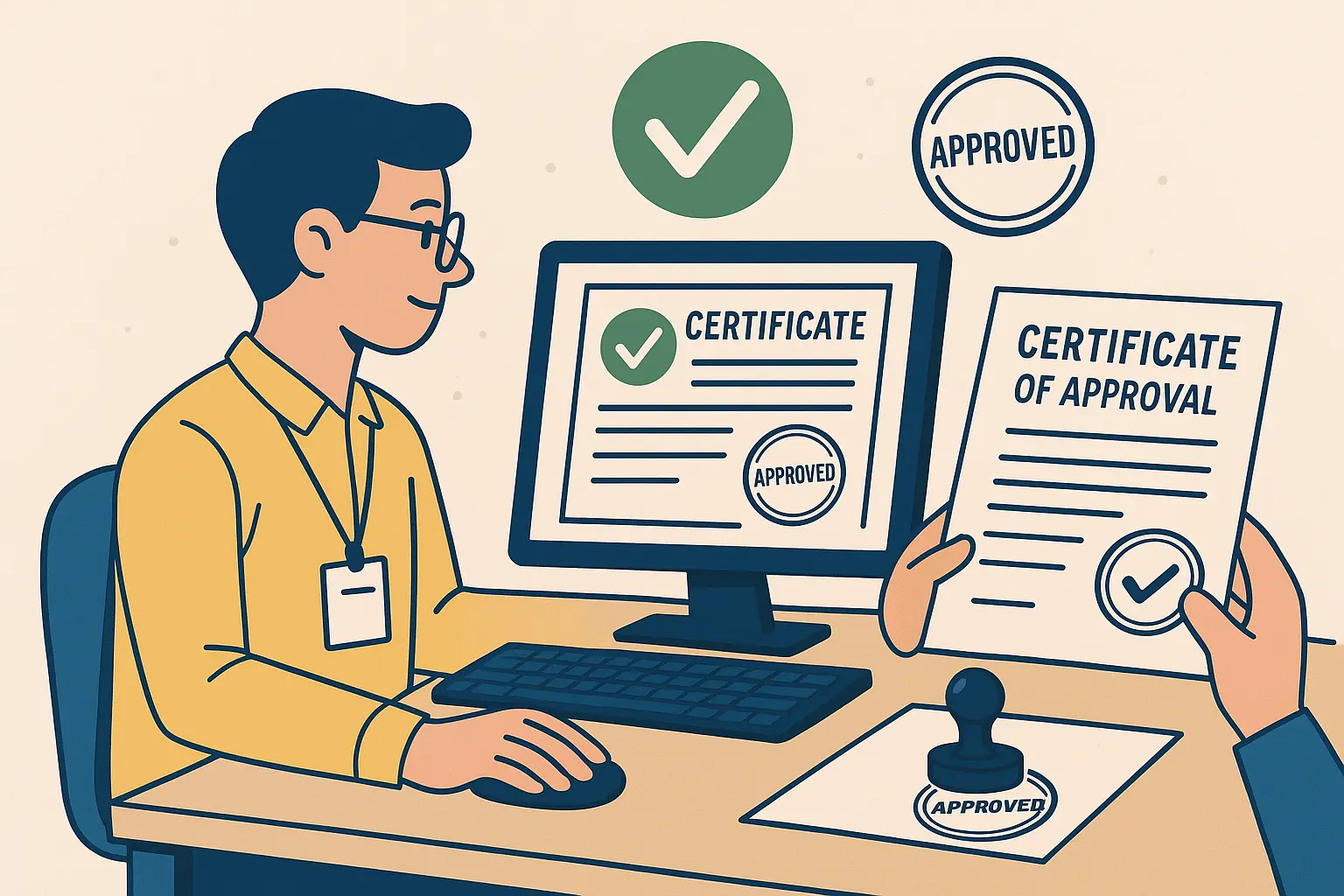I’ll be honest – when I first needed my completion certificate, I thought it would be simple. Submit a request, wait a week, done. Boy, was I wrong. After helping dozens of people navigate this process (and making plenty of mistakes myself), I’ve learned there’s a whole maze of factors that can turn your “quick request” into a months-long ordeal.
Look, I get it. You need this certificate, and you need it now. Maybe it’s for a job application with a deadline, or you’re trying to enroll in a program. The waiting game is stressful, especially when no one gives you straight answers about timing. According to the Minnesota Department of Health, as of August 29, 2025, they have completed and mailed documents for orders received by specific dates, with birth and death certificates showing processing times that can extend days or weeks depending on the type of request.
Table of Contents
-
Why Your Simple Request Becomes a Three-Week Adventure
-
The Real Story Behind All That Paperwork
-
Why Timing Your Request Matters More Than You Think
-
-
Location and School Size Matter Way More Than You’d Expect
-
How Your State Can Add Weeks to Your Wait
-
Big University vs. Small College: The Processing Speed Gap
-
-
When “Modern” Systems Are Anything But
-
Why Legacy Technology Is Killing Your Timeline
-
The Human Factor That Slows Everything Down
-
-
Your Backup Plan (Because You Need One)
-
Getting What You Need Right Now
-
How to Play the System Smart
-
TL;DR
-
Your completion certificate request goes through way more hoops than anyone tells you about
-
Remember that one-week timeline they promised? During graduation season, it can easily become three weeks
-
Big universities usually get your certificate out in 5-10 days, while small schools can take 10-15 days (or longer)
-
Many schools are still using computer systems from the stone age, which explains a lot
-
You can get a replacement certificate instantly online while waiting for the official one
-
Smart people have a backup plan – don’t let bureaucracy mess up your deadlines
Why Your Simple Request Becomes a Three-Week Adventure
Here’s what nobody tells you: your request doesn’t just sit in one person’s inbox waiting to be processed. It gets passed around like a hot potato through multiple departments, each adding their own delays. Understanding this bureaucratic nightmare helps explain why what seems like a simple document request can take forever.
This isn’t unique to completion certificates either. Similar delays plague other academic documents, as I explain in my guide on how long it takes to get a diploma, where you’ll find the same institutional bottlenecks causing headaches.
The Real Story Behind All That Paperwork
Your completion certificate request goes on quite the journey through your school’s bureaucracy. First, the registrar’s office has to validate your request (translation: make sure you filled out the form correctly). Then academic affairs needs to verify your records. Then student services has to actually print the thing. Each handoff between departments can add 3-5 business days to your timeline.
What actually happens to your request (and why it takes forever):
-
Day 1-2: Your request sits in someone’s inbox (yes, really)
-
Day 3-5: They check if you actually graduated (this involves calling other departments)
-
Day 6-8: Someone manually prints and reviews your certificate
-
Day 9-10: It finally gets mailed (if you’re lucky)
|
Processing Stage |
Who’s Responsible |
How Long It Takes |
What Goes Wrong |
|---|---|---|---|
|
Making Sure You Didn’t Mess Up the Form |
Registrar’s Office |
1-2 business days |
You forgot to sign something or sent the wrong form |
|
Checking Your Academic Records |
Academic Affairs |
2-3 business days |
Transfer credits are a mess, grades are disputed |
|
Confirming You Actually Graduated |
Academic Affairs |
1-2 business days |
Missing requirements, advisor hasn’t approved something |
|
Actually Making Your Certificate |
Student Services |
2-3 business days |
Printer’s broken, they ran out of special paper |
|
Final Check & Mailing |
Student Services |
1-2 business days |
Wrong address, mail room is behind |
When Departments Don’t Talk to Each Other (Spoiler: It Happens a Lot)
Before any certificate gets printed, your school has to dig through your records and make sure everything checks out. This means verifying transcripts, double-checking graduation requirements, and confirming you actually finished your degree. These steps represent the first major delay, especially if you transferred credits from other schools or have old records buried in filing cabinets.
Take Sarah’s situation. She transferred credits from three different community colleges before finishing her bachelor’s degree. When she requested her completion certificate, the verification process took an extra 8 business days because someone had to manually cross-reference her transfer credits against old paper records from schools that still haven’t gotten with the times and put everything on computers.
These verification headaches are similar to what I cover in my guide about replacing a lost diploma, where schools’ messy record-keeping creates the same processing nightmares.
The Game of Departmental Hot Potato
Your certificate needs sign-offs from multiple departments, and each handoff is another chance for delays. The registrar starts the process, academic affairs checks your requirements, and student services handles the final steps. The problem? These departments don’t always communicate smoothly, and each transfer can add several days to your wait.
I’ve watched requests sit in someone’s inbox for days simply because that person was out sick or at a conference. No backup system, no one else who can help. Your request just… sits there. It’s maddening, but it’s reality.
And here’s the kicker – while you’re sitting there wondering where your certificate is, the person processing it might be out for a week. Your request doesn’t get reassigned or expedited. It waits.
Digital vs. Old-School: Why It Matters for Your Timeline
Some schools can spit out digital certificates in hours through automated systems, while others still need to print everything on special paper with official seals and multiple signatures. The type of certificate you request directly impacts how long you’ll wait, with digital versions offering huge speed advantages over traditional paper documents.
Physical certificates need fancy paper, embossed seals, and often require signatures from multiple administrators who might not even be in the office. Digital certificates skip most of this drama, but many schools haven’t caught up with this technology yet.
Why Timing Your Request Matters More Than You Think
Here’s something most people don’t realize: when you submit your request can make or break your timeline. The weeks after major graduation ceremonies are absolute chaos for certificate processing, while summer months are like a speed highway for getting your documents.
The Post-Graduation Disaster You Need to Avoid
The 6-8 weeks after major graduation ceremonies are when certificate processing goes completely off the rails. During these peak times, that normal one-week processing time can stretch to three weeks or more as administrative staff drown in massive backlogs from recent graduates and alumni who suddenly need their paperwork.
According to Housing.com’s analysis of RERA certificate processing, authorities are required to issue registration certificates within 30 days of approval, though actual processing times vary significantly based on document completeness and seasonal demand fluctuations.
I’ve seen schools receive 10 times their normal volume of certificate requests in the month following graduation. Staff who normally handle 20-30 requests per week suddenly face 200-300 requests. The math doesn’t work, and your timeline suffers.
What I wish someone had told me: Never, ever submit a certificate request in the month following graduation unless it’s absolutely urgent. You’re basically volunteering to wait three times longer than necessary.
The Summer Sweet Spot Most People Miss
Here’s a secret that can save you weeks: requests submitted during summer months typically get processed 40-60% faster. Why? Reduced staff workloads and fewer competing priorities. Summer is the sweet spot for certificate requests, when administrative staff actually have time to handle your request efficiently.
Michael learned this lesson the hard way. He submitted his completion certificate request in July and got it back in 4 business days. His classmate who requested the same certificate in May (right after graduation) waited 3 weeks because of the post-graduation processing nightmare.
Pro tip from someone who’s been there: If you can plan ahead, submit your request in July or August. The difference in processing speed is dramatic.
Location and School Size Matter Way More Than You’d Expect
Where your school is located and how big it is can add weeks to your wait time. Different states have different hoops to jump through, and the size of your institution directly affects how quickly they can process your request. Understanding these factors helps you set realistic expectations instead of getting frustrated when timelines don’t match promises.
How Your State Can Add Weeks to Your Wait
Different states have different rules for how certificates must be processed and authenticated, creating huge timeline differences depending on where you went to school. Some states require extra verification steps, especially for professional licensing programs, and these regulatory requirements can add 5-10 business days to what should be a simple request.
State Red Tape That Slows Everything Down
Some states mandate additional verification steps for completion certificates, particularly for professional licensing programs. These aren’t just bureaucratic annoyances – they’re legal requirements that schools must follow, even if it means your certificate takes longer to process.
Recent changes in building safety compliance show how regulatory frameworks directly impact certification timelines. “Building Safety for Higher Risk Buildings” by Charles Russell Speechlys demonstrates that determination periods for building control approval now require 12 weeks for new builds and 8 weeks for existing structures, showing how regulatory requirements create unavoidable delays.
What this means for you: If your program relates to professional licensing (nursing, teaching, engineering, etc.), expect extra time for state-mandated verification steps.
International Requests: Prepare for a Long Wait
Need your certificate authenticated for use in another country? Buckle up. Cross-border certificate requests involve additional authentication layers, embassy validations, and translation requirements that can stretch your timeline to 4-8 weeks. You’re not just dealing with your school anymore – you’re dealing with multiple agencies and government departments.
These international headaches are similar to the challenges I cover when discussing getting a diploma from a closed school, where additional verification steps and third-party coordination turn simple requests into multi-month ordeals.
Big University vs. Small College: The Processing Speed Gap
The size of your school creates a direct correlation with how fast you’ll get your certificate. Big universities with dedicated credentialing departments usually outperform smaller schools that rely on a couple of overworked staff members and manual processes.
|
School Type |
Typical Wait Time |
Staff Handling Certificates |
Technology Level |
How Bad Graduation Season Gets |
|---|---|---|---|---|
|
Large State Universities |
5-10 business days |
8-15 full-time people |
Actually modern systems |
50-100% longer wait |
|
Mid-size Private Colleges |
7-12 business days |
3-6 part-time staff |
Mix of digital and manual |
100-150% longer wait |
|
Community Colleges |
10-15 business days |
1-3 part-time staff |
Mostly manual |
150-200% longer wait |
|
Trade/Technical Schools |
8-14 business days |
1-2 staff members |
Basic computer systems |
100-200% longer wait |
Why Big Universities Usually Win
Major universities with dedicated credentialing departments can typically get your certificate processed in 5-10 business days because they’ve invested in the infrastructure and staff to handle high volumes efficiently. They have streamlined workflows, automated systems, and enough people that one person being out sick doesn’t shut down the whole operation.
Small School Struggles Are Real
Smaller colleges and trade schools often take 10-15 business days (or longer) because they’re working with limited staff and manual processes. I’ve worked with community colleges where the same person who processes certificates also handles transcript requests, enrollment verification, and student records updates. When that person goes on vacation, everything stops.
Reality check: If you went to a small school, don’t expect big university processing speeds. Plan accordingly.
Private vs. Public: The Bureaucracy Factor
Private schools generally process certificates faster because they have fewer bureaucratic layers and can make decisions more quickly. Public institutions often need additional approvals and have to navigate more complex administrative hierarchies that add time to everything.
When “Modern” Systems Are Anything But
Your school’s technology directly determines how fast you’ll get your certificate. Many schools operate with systems that were cutting-edge when flip phones were popular, creating unpredictable delays that nobody wants to talk about. Even when schools have newer technology, they still rely on human oversight that adds time to the process.
Why Legacy Technology Is Killing Your Timeline
Many schools struggle with computer systems that weren’t designed for modern certificate processing. While some newer schools can issue verified digital certificates in minutes using blockchain technology, others are stuck with decades-old systems that require staff to manually extract and verify information before any certificate can be printed.
The gap between modern and legacy systems is huge. Housing.com’s RERA registration guide shows how modern online portals can generate professional-quality certificates instantly upon order submission, highlighting the massive difference between what’s possible with current technology and what many schools are actually using.
When Your School’s Computer System Is Older Than You Are
Older institutions often rely on student information systems that were installed decades ago. These legacy systems weren’t designed for automated certificate processing, forcing staff to manually pull records and verify information before certificates can be issued. It’s like trying to stream Netflix on a computer from 1995.
Processing efficiency varies dramatically based on system capabilities. According to Minnesota Department of Health data, expedited processing services can significantly reduce wait times, with some requests processed within 5 working days compared to standard processing that can take several weeks.
I’ve literally watched registrars print out database queries, manually check information against paper files, then type the data back into certificate templates. This process can take hours for a single certificate that modern systems could generate in seconds.
Lesson learned: Don’t assume your school has modern systems just because it’s 2024. Many are still running on technology from the early 2000s.
The Digital Revolution That Hasn’t Reached Everyone
Modern blockchain-based certificate systems can issue verified credentials within minutes, providing instant authentication and tamper-proof documentation. But adoption remains limited across traditional educational institutions, with most still using older verification methods that require more time and manual oversight.
The shift toward digital certificates is happening, as I explore in my guide to digital diplomas, but it’s happening slowly and unevenly across different institutions.
The Human Factor That Slows Everything Down
Despite all the talk about automation, human oversight remains crucial in certificate processing. Even the most advanced automated systems require human verification to ensure accuracy, and quality control specialists typically add 1-3 days to processing timelines for thorough review of each certificate before it goes out the door.
Why Someone Still Has to Check Everything Manually
Even the most sophisticated automated systems require human verification for accuracy and completeness. Quality control specialists review each certificate for proper formatting, accurate information, and compliance with institutional standards, adding necessary time to ensure document integrity.
At Tech State University, their automated certificate system can generate documents in under 30 minutes, but each certificate still requires manual review by a quality control specialist. This human oversight caught a system error that would have printed 200 certificates with incorrect graduation dates, demonstrating why this step remains essential despite adding 24-48 hours to processing times.
What this means for you: Even schools with “instant” systems still need humans to double-check everything. Factor this into your timeline expectations.
Your Backup Plan (Because You Need One)
When institutional timelines don’t work for your deadlines, you need alternatives that can deliver immediately. Modern technology makes it possible to get high-quality completion certificates within seconds of placing an order, completely bypassing traditional institutional delays while staying within legal boundaries for legitimate replacement and commemorative purposes.
Getting What You Need Right Now
Advanced online platforms can create high-quality completion certificates instantly upon order submission, giving you immediate digital access with optional physical delivery. These modern certificate creation platforms offer extensive customization options while maintaining professional quality standards, letting you get personalized documents that meet your timeline requirements.
The efficiency difference is staggering. While institutional processing can take 30 days according to statutory requirements, modern digital platforms can deliver certificates within seconds – that’s a processing time improvement of over 99% for immediate documentation needs.
For immediate solutions, check out my comprehensive guide on replacement diplomas which explains how alternative providers can deliver professional-quality certificates while you wait for official institutional processing.
Instant Digital Delivery That Actually Works
Modern online platforms can generate professional-quality completion certificates instantly upon order submission. You get immediate digital access to your certificate, with options for physical delivery within 2-7 business days, completely bypassing traditional institutional processing delays.
Here’s what you can get right away:
-
High-resolution digital certificates for immediate use
-
Professional formatting and design
-
Customizable details and personalization
-
Physical copies shipped within days
-
Multiple format options (PDF, print-ready, etc.)
Customization Without Waiting Forever
Alternative certificate platforms offer extensive customization options while maintaining professional quality standards. You can personalize documents with specific details, formatting preferences, and design elements that meet your individual needs without sacrificing document quality or professional appearance.
How to Play the System Smart
Understanding when to pursue traditional institutional channels versus alternative solutions requires knowing your intended use, timeline requirements, and legal compliance factors. Replacement certificates for personal display and backup documentation can be obtained immediately through alternative providers, while official verification requires institutional channels.
When Alternative Solutions Make Perfect Sense
Replacement certificates work perfectly for personal display, backup documentation, and commemorative purposes when you need documentation quickly for non-official purposes while waiting for institutional processing of official verification documents.
Perfect situations for replacement certificates:
-
Personal display or framing
-
Backup documentation for your records
-
Commemorative purposes for family/friends
-
Portfolio documentation for interviews
-
Social media or professional profiles
-
Motivation and goal-setting displays
-
Gift purposes for family members
-
Historical record keeping
When you need the official version:
-
Employment verification
-
Professional licensing applications
-
Graduate school applications
-
Government clearance processes
-
Legal proceedings
-
Immigration documentation
-
Insurance claims
-
Banking/financial services
Playing by the Rules While Getting What You Need
Alternative certificate solutions operate within clear legal boundaries, providing legitimate services for non-fraudulent purposes while maintaining transparency about document origins and limitations. These services clearly distinguish between replacement/commemorative certificates and official institutional documents.
What I wish someone had told me: There’s nothing wrong with getting a replacement certificate for your personal needs while waiting for the official version. Smart people have backup plans.
When you’re facing tight deadlines and can’t wait for traditional institutional processing, ValidGrad offers an immediate solution for your completion certificate needs. Our platform delivers high-quality replacement certificates digitally within seconds, with physical copies available in 2-7 business days – perfect for personal display, backup documentation, or commemorative purposes while you wait for official institutional processing.
Take Mark’s example. He needed his certificate for a professional license renewal with a firm deadline – no extensions allowed. His school promised two weeks, but week three rolled around with no certificate and no clear answers. He ended up using ValidGrad to get a replacement for his records while still pushing the school for the official version. Smart move – he met his deadline and got peace of mind.
Final Thoughts
Here’s the bottom line: getting your completion certificate through official channels can be a real pain. Sometimes the system works great, sometimes it doesn’t. Having a backup plan isn’t just smart – it’s necessary.
The timeline for getting a completion certificate depends on way more factors than anyone tells you upfront – bureaucratic procedures, seasonal demand, geographic requirements, school size, and technology infrastructure all play a role. While traditional channels remain necessary for official verification purposes, alternative solutions provide valuable options when you need immediate documentation for legitimate replacement or commemorative purposes.
Now, I know what you’re thinking – “This can’t be that complicated for everyone.” And you’re right, sometimes it isn’t. But do you really want to gamble your timeline on “sometimes”?
Here’s what I want you to take away from all this: Don’t just hope for the best. Plan for delays, have a backup ready, and don’t let anyone make you feel bad for needing your certificate quickly. Your timeline matters, your deadlines are real, and you deserve better than vague promises and endless waiting.
Whether that’s using a service like ValidGrad for immediate needs or just building extra time into your timeline, don’t let bureaucracy mess up your plans. Understanding these various factors and options empowers you to make informed decisions about the best approach for your specific situation.
The question of how long it takes to get a completion certificate doesn’t have a simple answer, but with the insights in this guide, you’re now equipped to navigate the process more effectively and explore alternative solutions when traditional timelines don’t meet your needs.

